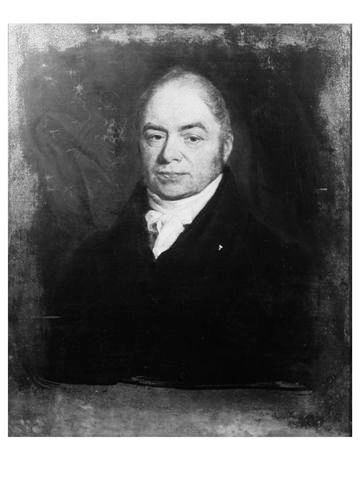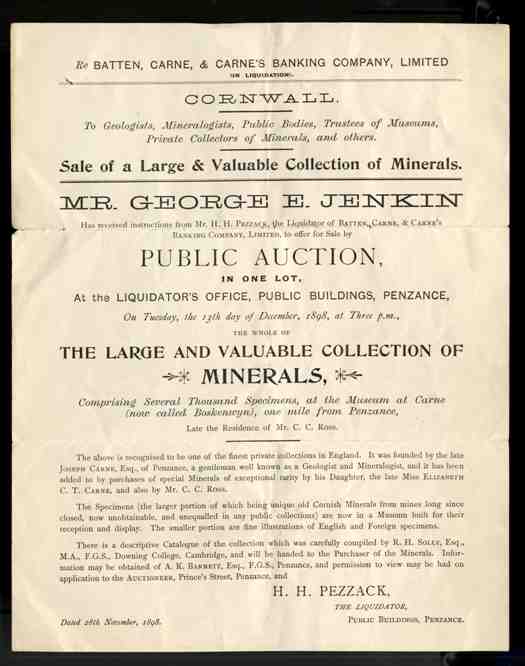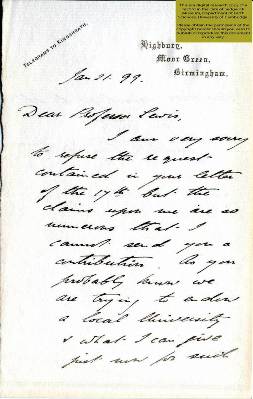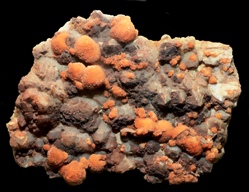Douglas Palmer connects a Cornish Banker’s mineral collection, the Sedgwick Museum, a Civil Lord of the Admiralty and the Brontës.
 Among the million and half geological specimens in Cambridge University’s Sedgwick Museum is the Carne collection of some 9000 Cornish minerals. Recently, I was asked if I knew anything about the collection and why it ended up in Cambridge, I did not but said that I would try to find out.
Among the million and half geological specimens in Cambridge University’s Sedgwick Museum is the Carne collection of some 9000 Cornish minerals. Recently, I was asked if I knew anything about the collection and why it ended up in Cambridge, I did not but said that I would try to find out.
Picture: Photo of an oil portrait of Joseph Carne, attributed to the circle of William Owen RA (1769-1825). Copyright Morrab Library Photographic Archive, Penzance. 'Attributed to the circle of William Owen RA (1769-1825)
Taking the easy route first by ‘Googling’ the Carne mineral collection, the Wikipedia entry on Joseph Carne comes top of the list. A quick scan shows that indeed Joseph Carne and his daughter Elizabeth were responsible for amassing this remarkable collection in the middle of the 19th Century. However, for a more reliable source I turned to the Dictionary of National Biography, which clarifies some of the background to the Carne collection and the father and daughter who made it.
It appears that this important collection Cornish minerals was mostly collected by Joseph Carne FRS (1782-1858) and then had some foreign mineral specimens added by his daughter Elizabeth (1817-1873), who was also a keen mineral collector and author. It seems that after her father’s death Elizabeth offered the collection to the Royal Geological Society of Cornwall but they did not find her conditions acceptable. Then somewhat mysteriously the collection turned up in the University of Cambridge’s Sedgwick Museum.
BRONTËS’ SOURCE
I was curious on two accounts: how the collection came to be in Cambridge and what the connection might be with the Brontë family? The latter possibility arose from the original question, put to me by Sarah Fermi, a member of the Brontë Society. She is investigating the Carne family because the Brontë siblings (Maria, Elizabeth, Charlotte, Emily, Anne and Branwell) were brought up by their aunt, Elizabeth Branwell (1776-1842), following the death of their mother Maria (1783-1821). The Branwell family came from Penzance in Cornwall. Elizabeth and her sister Maria were the daughters of Thomas Branwell (1746-1808) and Anne Carne (1745-1809) and spent their youth in Cornwall until the death of their father in 1808. The Branwell and Carne families were not only connected by marriage and location but also by their relative prosperity.
 Picture: Poster for the auction in 1898 of the Carne mineral collection, following the collapse and liquidation of the Batten, Carne and Carne’s Bank. Sedgwick Archive Ref.: DDF Box 545
Picture: Poster for the auction in 1898 of the Carne mineral collection, following the collapse and liquidation of the Batten, Carne and Carne’s Bank. Sedgwick Archive Ref.: DDF Box 545
For Brontë aficionados there is the question of potential Cornish influence, passed on to the children by their mother and more especially their aunt Elizabeth Branwell, who was a great influence on all their lives. She was a well educated and informed woman of independent mind, typical of her Cornish background and it would be surprising if none of this had rubbed off on the children and their imagined worlds.
The Sedgwick Museum has a small display about Joseph Carne and his mineral collection. This includes a notice of sale in 1898 of the Carne mineral collection (Sedgwick Archive Ref.: DDF Box 545), following the liquidation of the Batten, Carne and Carne Bank. Apparently, Joseph Carne, the oldest son of William Carne, partner in the Cornish bank of Oxnam, Batten & Co. (subsequently Batten, Carne & Carne), was a self-taught geologist and mineralogist who made detailed investigations of the rocks and minerals of Cornwall and was appointed manager of the Cornish Copper Company’s works at Hayle in 1807 - in which year he also was elected an honorary member of the Geological Society of London at its foundation.
In 1814 he was also a founder member, along with Henry S Boase, Sir John St Aubyn, William Bolitho and Davies Giddy, of the Royal Geological Society of Cornwall, the only geological society to enjoy Royal patronage. Carne became its treasurer from 1827 until 1858 and read 39 papers to the Society, mostly on the mining and economic geology of Cornwall, of which nine were published. He was also elected a Fellow of the Royal Society in 1818 and became an honorary member of the Cambridge Philosophical Society.
WERNER
Although the Wikipedia entry on Carne claims that his published works prompted the eminent German geologist Abraham Gottlieb Werner (1749-1817) to travel to Cornwall, I can find no reference to back this claim. On the contrary, it is generally stated that Werner never travelled beyond his native Saxony.
In 1820 Joseph Carne had also become a partner in the family bank of Batten, Carne & Carne but this does not seem to have stopped his geological and other social and philanthropic activities. During that part of his professional career, which was associated with Cornish mines, Carne amassed a unique collection of Cornish minerals, especially rare ore minerals. Upon his death in 1858, the fifth of his six children, Elizabeth, inherited £20,000, his mineral collection, the family house and a partnership in the bank. She also took her geology and natural history seriously, visiting Europe and authored books and published papers for the Transactions of the Royal Geological Society of Cornwall and the London Quarterly Review.
DISPLAY
Picture: Letter from Austen Chamberlain explaining why he could not contribute towards the purchase of the Carne Collection.
The Sedgwick display on the Carne collection was put together in 2012 by Sandra Marsh, museum archivist. She found documentation on its acquisition, including a descriptive catalogue of the collection, which had been carefully prepared in 1885 by Richard Harrison Solly (1851-1925), a Cambridge mineralogist and Fellow of Downing College (Sedgwick Archive Ref.: DDF Box 577). This documentation includes an auction notice in 1898 for the collection from the liquidator of the family bank following its collapse in 1896, long after Elizabeth Carne’s death. Persuaded of the collection’s value, William J Lewis (1847-1926), then Professor of Mineralogy in Cambridge, made a successful bid for the collection on 4 January 1899 but then had to raise £475 quickly to pay for it.
Letters and other documents in the Sedgwick archive suggest that Lewis sent a begging letter around all the ‘great and good’ of the University and beyond (Sedgwick Archive Ref.: DDF Box 545). One of the letters, dated 21 January 1899, shows that Lewis certainly had some good connections - although they did not always produce the ‘goods’. One of them says ‘Dear professor Lewis/ I am very sorry to refuse the request…but the claims upon me are so numerous that I cannot send you a contribution. As you probably know we are trying to endow a local University and what I can give just now for such purposes must go to it./ yrs. truly/ Austen Chamberlain. That University was Birmingham, Britain’s first civic university, founded in 1900 from the radical vision of the local Chamberlain family of eminent politicians. So perhaps the then Civil Lord of the Admiralty, Austen Chamberlain might be forgiven for not donating to the Carne fund.
 Picture: Rough spherules of orange coloured calcite crystals on iron stained quartz, Botallack, near St Just, Cornwall. Carne Collection, Sedgwick Museum, University of Cambridge, photographed by A. Tindle
Picture: Rough spherules of orange coloured calcite crystals on iron stained quartz, Botallack, near St Just, Cornwall. Carne Collection, Sedgwick Museum, University of Cambridge, photographed by A. Tindle
Among the 68 named donors, there were four ‘Lords’, including a Rothschild, two City companies, eight masters of Cambridge colleges, three Darwins, two MPs, twelve Fellows of the Royal Society and a QC.
The interesting thing is that the acquisition of the Carne Collection occurred 26 years after Elizabeth’s death so the old version of this story needs to be rewritten. It is also of interest that an obituary notice for Elizabeth in the Pall Mall Gazette claims that the Carne mineral collection was worth £3000. If true, the Sedgwick Museum got a bargain. What if anything of the Carne family’s social and economic activities impacted upon the Brontë family remains to be seen.
*
Douglas Palmer is a freelance author